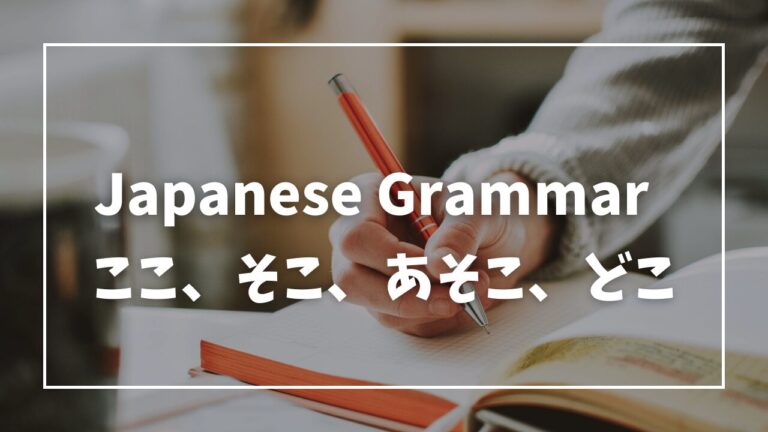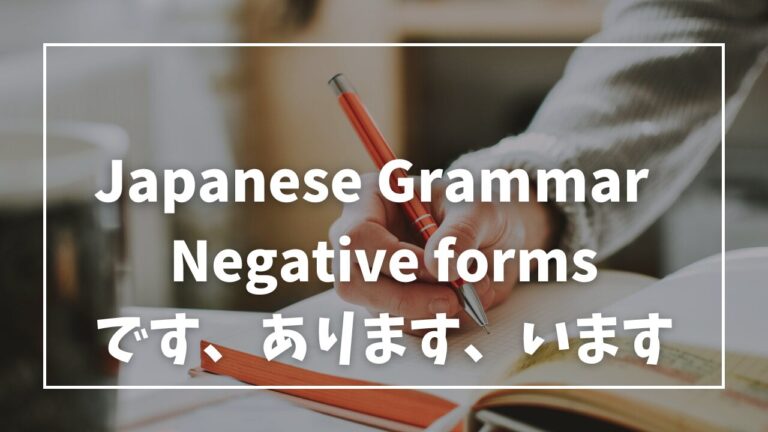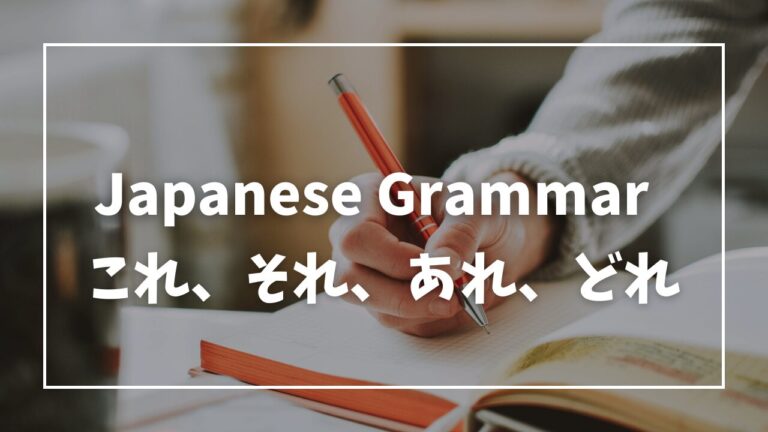The Essential Guide to the ます Form
A comprehensive introduction for beginning Japanese learners
Introduction
When you begin your Japanese language journey, one of the first and most important grammar points you’ll encounter is the ます (masu) form. This versatile verb form serves as a foundation for polite Japanese speech and writing, making it an essential skill to master early in your studies.
In this guide, we’ll explore everything you need to know about the ます form—from its basic construction to practical usage in everyday situations. By the end, you’ll have a solid understanding of this fundamental Japanese grammar pattern and be ready to use it confidently in your conversations.
What is the ます Form?
The ます form is a polite, present affirmative verb form in Japanese. It’s considered the standard polite speech style (丁寧語, teineigo) and is widely used in a variety of formal and semi-formal situations.
When to Use the ます Form
The ます form is appropriate in numerous contexts:
- When speaking with people you don’t know well
- In conversations with teachers, professors, or supervisors
- When talking to customers or clients in a business setting
- During formal presentations or speeches
- When writing emails or letters to people outside your close circle
- In any situation where showing respect or maintaining politeness is important
For beginners, the ます form is particularly valuable because it’s always considered appropriate. When in doubt about which speech style to use, defaulting to the ます form is a safe choice that demonstrates respect and proper Japanese etiquette.
How to Create the ます Form
The method for creating the ます form depends on the verb group. Japanese verbs are divided into three main categories: Group 1 (U-verbs), Group 2 (RU-verbs), and Group 3 (Irregular verbs).
Group 1 Verbs (U-verbs)
These verbs end with an う-sound (う, く, ぐ, す, つ, ぬ, ぶ, む, る).
To form the ます form:
- Remove the final う-sound
- Add います
Here are some common examples:
| Dictionary Form | Remove う-sound | Add います | ます Form |
|---|---|---|---|
| 買う (kau) – to buy | 買 (ka) | 買い (kai) | 買います (kaimasu) |
| 話す (hanasu) – to speak | 話 (hana) | 話し (hanashi) | 話します (hanashimasu) |
| 読む (yomu) – to read | 読 (yo) | 読み (yomi) | 読みます (yomimasu) |
| 書く (kaku) – to write | 書 (ka) | 書き (kaki) | 書きます (kakimasu) |
| 待つ (matsu) – to wait | 待 (ma) | 待ち (machi) | 待ちます (machimasu) |
| 泳ぐ (oyogu) – to swim | 泳 (oyo) | 泳ぎ (oyogi) | 泳ぎます (oyogimasu) |
| 死ぬ (shinu) – to die | 死 (shi) | 死に (shini) | 死にます (shinimasu) |
| 遊ぶ (asobu) – to play | 遊 (aso) | 遊び (asobi) | 遊びます (asobimasu) |
| 帰る (kaeru) – to return | 帰 (kae) | 帰り (kaeri) | 帰ります (kaerimasu) |
Notice how the final character changes before adding います. This process follows predictable patterns:
- う → い: 買う → 買います
- く → き: 書く → 書きます
- ぐ → ぎ: 泳ぐ → 泳ぎます
- す → し: 話す → 話します
- つ → ち: 待つ → 待ちます
- ぬ → に: 死ぬ → 死にます
- ぶ → び: 遊ぶ → 遊びます
- む → み: 読む → 読みます
- る → り: 帰る → 帰ります (Note: This is for Group 1 る-verbs only)
Group 2 Verbs (RU-verbs)
These verbs end with る preceded by either い, え, or another vowel sound.
To form the ます form:
- Remove る
- Add ます
Examples:
| Dictionary Form | Remove る | Add ます | ます Form |
|---|---|---|---|
| 食べる (taberu) – to eat | 食べ (tabe) | 食べます (tabemasu) | |
| 見る (miru) – to see | 見 (mi) | 見ます (mimasu) | |
| 起きる (okiru) – to wake up | 起き (oki) | 起きます (okimasu) | |
| 寝る (neru) – to sleep | 寝 (ne) | 寝ます (nemasu) | |
| 信じる (shinjiru) – to believe | 信じ (shinji) | 信じます (shinjimasu) |
Group 3 Verbs (Irregular)
There are only two irregular verbs in Japanese, and their ます forms must be memorized:
| Dictionary Form | ます Form |
|---|---|
| する (suru) – to do | します (shimasu) |
| 来る (kuru) – to come | 来ます (kimasu) |
Additionally, compounds that use する follow the same pattern:
- 勉強する (benkyō suru) – to study → 勉強します (benkyō shimasu)
- 練習する (renshū suru) – to practice → 練習します (renshū shimasu)
Practical Usage of the ます Form
The ます form serves multiple functions in Japanese communication:
1. Expressing Present or Future Actions
The ます form can indicate both present and future actions, depending on context:
- 毎日日本語を勉強します。(Mainichi nihongo o benkyō shimasu.) I study Japanese every day. (Present habitual)
- 明日東京に行きます。(Ashita Tōkyō ni ikimasu.) I will go to Tokyo tomorrow. (Future)
2. Describing Habitual Actions
Use the ます form to talk about routines or regular activities:
- 朝ごはんを食べます。(Asa gohan o tabemasu.) I eat breakfast.
- 週末に映画を見ます。(Shūmatsu ni eiga o mimasu.) I watch movies on weekends.
3. Stating Facts
The ます form is also used for general statements of fact:
- 水は100度で沸騰します。(Mizu wa hyaku-do de futtō shimasu.) Water boils at 100 degrees.
- 日本人は箸を使います。(Nihonjin wa hashi o tsukaimasu.) Japanese people use chopsticks.
4. Making Polite Requests or Suggestions
Combined with other grammar patterns, the ます form helps form polite requests:
- ここに名前を書いてください。(Koko ni namae o kaite kudasai.) Please write your name here.
- 一緒に食べませんか。(Issho ni tabemasen ka?) Would you like to eat together?
Tips for Mastering the ます Form
- Create flashcards with dictionary form verbs on one side and their ます forms on the other.
- Practice daily conversations using the ます form, even if just speaking to yourself.
- Watch Japanese videos or anime and listen specifically for the ます endings.
- Read simple Japanese texts and identify ます forms in context.
- Keep a vocabulary journal where you write new verbs in both dictionary and ます forms.
- Use spaced repetition to review verbs you’ve learned, focusing on those you find difficult.
- Record yourself speaking sentences with the ます form to improve your pronunciation.
- Start with high-frequency verbs that you’ll use often in conversation.
Common Mistakes to Avoid
- Confusing Group 1 and Group 2 verbs: Some る-ending verbs are actually Group 1. Check a dictionary if you’re unsure.
- Incorrect stem formation: Be careful when removing the う-sound from Group 1 verbs.
- Using too casually: Remember that the ます form is polite. Don’t mix it with casual speech forms in the same sentence.
- Forgetting about irregular verbs: Remember that する and 来る have special ます forms.
Conclusion
The ます form is one of the most important grammatical structures you’ll learn as a beginning Japanese student. It forms the backbone of polite communication and opens the door to expressing yourself properly in a wide range of situations.
By mastering this form early in your studies, you’ll build confidence in your ability to speak Japanese appropriately and set a strong foundation for learning more complex grammar in the future.
Continue practicing regularly, and soon the ます form will become second nature to you. Remember that consistent study and real-world practice are the keys to success in language learning.
がんばってください!(Ganbatte kudasai!) – Good luck!








